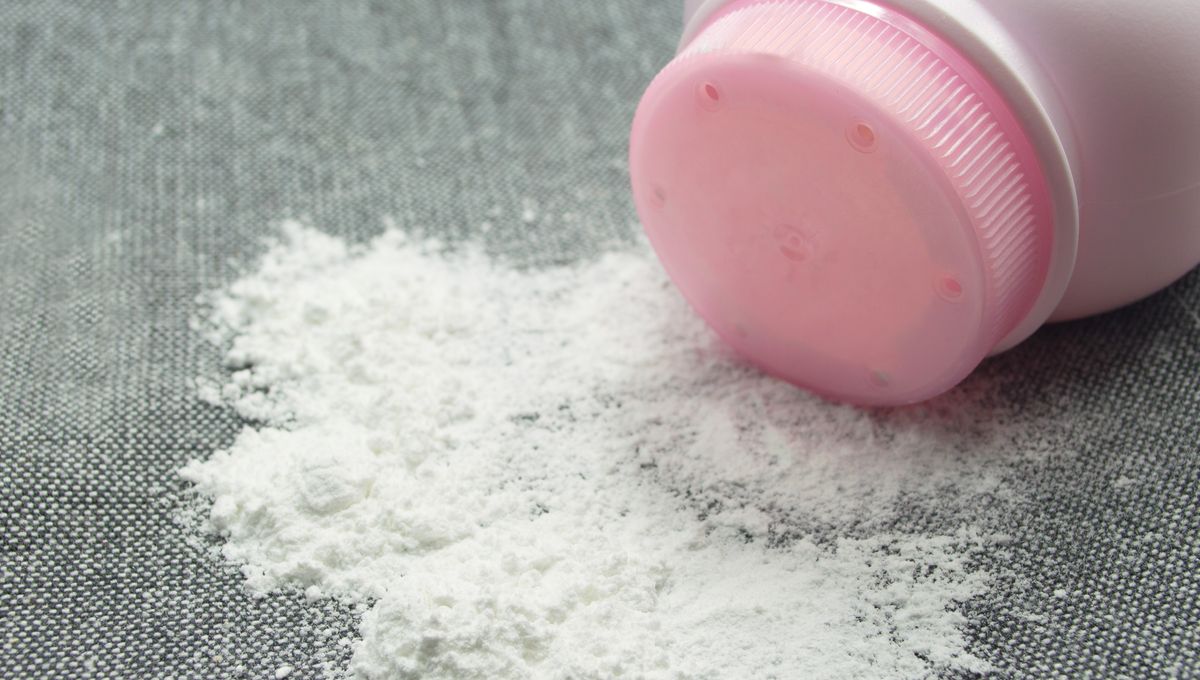
Scientists from the World Health Organization’s (WHO) International Agency for Research on Cancer (IARC) have concluded that talc, a mineral that’s used in a whole bunch of frequently used products, is “probably carcinogenic”.
“Carcinogenic” is a concerning word on the face of it – after all, it means the potential to cause cancer. But in this case, the experts aren’t saying that talc definitely has that ability.
What is talc?
Talc is a soft, naturally occurring mineral made up of magnesium, silicon, oxygen, and hydrogen. It’s mined in many places worldwide and turned into powder to be used in all sorts of ways, including in plastics, roofing materials, paper, and animal feed.
However, people are most likely to have been exposed to it in the form of cosmetics and body powders like talcum and baby powder.
It’s talcum powder that’s popped up in many headlines alongside cancer. That’s because talc can often be found in close proximity to asbestos, so there’s a chance talcum powder products might be contaminated by it.
Whilst we know that asbestos is carcinogenic, with some manufacturers shifting to alternative baby powder products to avoid contamination, the cancer-causing ability of talc on its own has been somewhat less clear.
What did the study find?
The IARC put together a working group of 29 scientists from 13 countries to assess the cancer-causing ability of talc.
They analyzed three different types of evidence: that coming directly from studies in humans; evidence from scientific studies in animals; and that from experiments like those using human cells or tissue grown in a lab:
- Human studies showed “limited” evidence – though there were many that found higher rates of ovarian cancer in people who reported using powder on their perineum (the area between the anus and vulva in females).
- Animal studies provided “sufficient” evidence – for example, research rats that had breathed in talc had gone on to develop a variety of different tumors.
- Experimental systems showed “strong” evidence – studies found talc could alter some of the key cellular processes related to cancer, like proliferation and nutrient supply.
Combining this evidence, the team concluded that talc was “probably carcinogenic to humans”.
What do the findings mean?
The use of the term “probably” within the study is a deliberate decision – it means the scientists in the working group think there’s enough evidence to suggest that talc might have the potential to cause cancer, but not enough to say that it definitely does.
Take the evidence from animal studies and those in experimental models like cell cultures; while it’s deemed “sufficient” and “strong” respectively by the team, the response to talc seen in a rat or a collection of cells in a dish won’t necessarily be the same as in an actual human.
As Professor Paul Pharoah, Professor of Cancer Epidemiology at Cedars-Sinai Medical Center told the Science Media Centre, “Extrapolating from model systems and animal models to humans is problematic.”
That’s not to say that those studies aren’t useful – there’s a reason why they’re used throughout research and in evaluations such as this – but scientists can’t say for sure that it’ll translate to us.
Then there’s the human studies – why was the evidence found to be “limited” when many of the studies the team looked at showed a higher incidence of ovarian cancer with the use of talcum powder?
Though they looked at research where talc was believed to be asbestos-free, the key reason is that they couldn’t fully rule out that it was in fact present. Given asbestos’s well-known carcinogenicity, it wouldn’t be scientifically sound to conclude at this point that talc was the definitive cause of ovarian cancer cases seen in the studies – even if it actually was.
The team also couldn’t guarantee that participants in some of the studies analyzed had used talc in the way they said they had – sometimes people misremember. Add to that the fact that there are plenty of other factors that can increase someone’s risk of ovarian cancer and it was concluded that “a causal role for talc could not be fully established,” according to a statement from the IARC.
Also speaking to the Science Media Centre, Professor Kevin McConway, Emeritus Professor of Applied Statistics at the Open University explained: “Rightly, they aren’t saying that talc cannot cause ovarian cancer in humans. But they can’t at all be sure that in fact it does cause an increase in risk, at the levels of exposure that might happen in normal use of talc or indeed in any other circumstances of use.”
“IARC’s experts still leave some room for doubt that using talc can ever cause human cancers at all, though they believe it probably can, and they haven’t pronounced on the circumstances under which it might actually increase ovarian cancer risk in real life,” added McConway.
“There’s still a lot of uncertainty here.”
A summary of the findings is published in The Lancet Oncology, with a detailed report expected to come in 2025.
All “explainer” articles are confirmed by fact checkers to be correct at time of publishing. Text, images, and links may be edited, removed, or added to at a later date to keep information current.
The content of this article is not intended to be a substitute for professional medical advice, diagnosis, or treatment. Always seek the advice of qualified health providers with questions you may have regarding medical conditions.
Source Link: WHO Says Talc Is "Probably Carcinogenic" – Here's What That Means